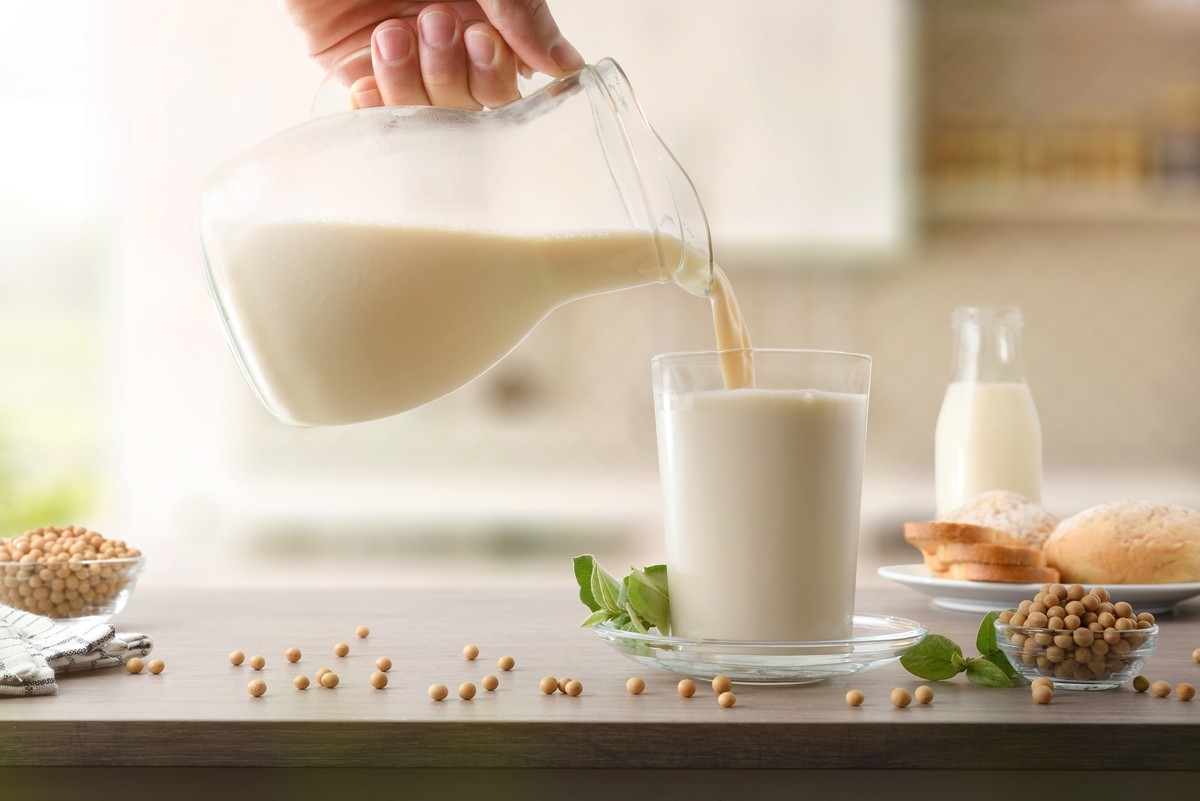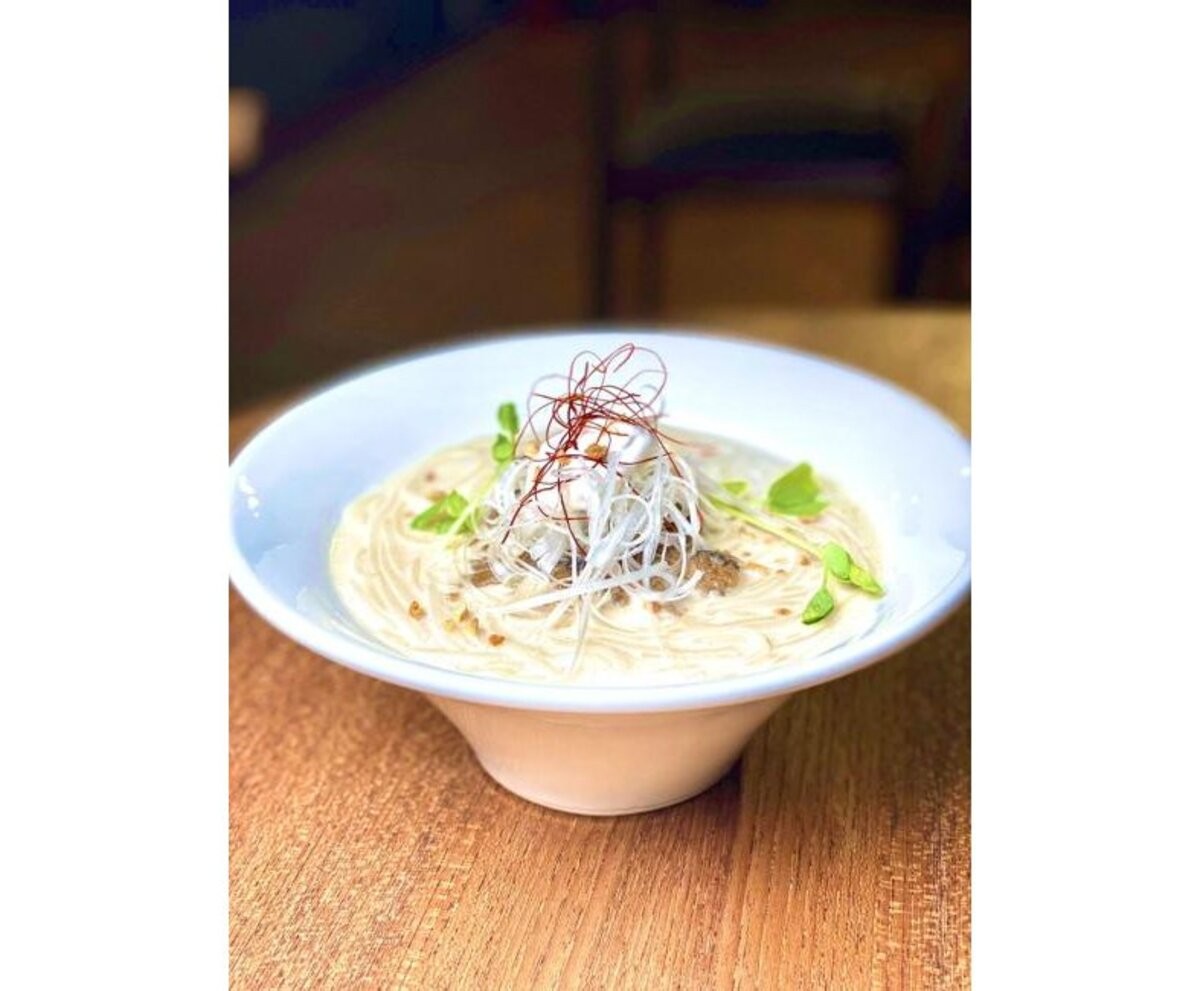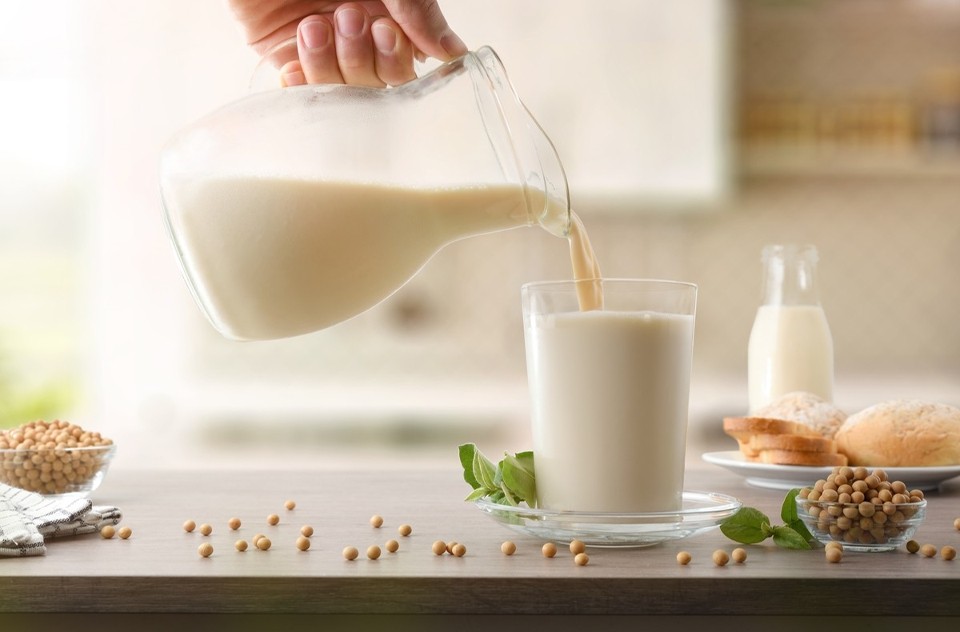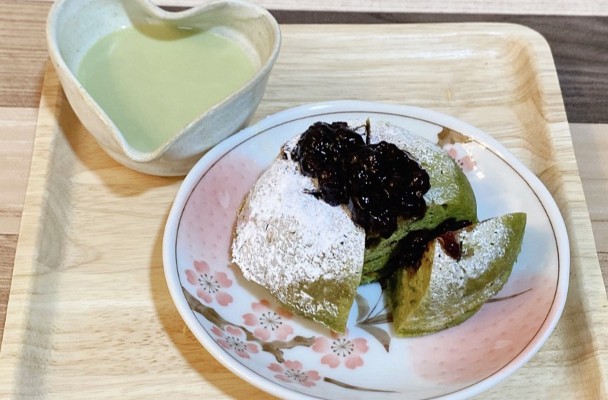Soy milk is one of Japan's familiar plant-based milks, deeply rooted in the Japanese diet. It has gained popularity through multiple "booms," but the journey wasn’t always smooth. At one point, soy milk struggled to be accepted in the market, leading to a series of trials and improvements before finally achieving widespread success.
In this article, we'll explore the history of soy milk, its different types and nutrients, recommended ways to enjoy it, and even some great places to try delicious soy milk dishes!
* If you purchase or book any products mentioned in this article, a portion of the sales may be returned to FUN! JAPAN.
The History of Soy Milk: A Drink Enjoyed for Over 2,000 Years?

Soy milk is a classic plant-based milk with a long history. It’s believed that soy milk has been produced in China for over 2,200 years. It is thought to have been introduced to Japan during the Nara period (710-794), where it was referred to as "Tōfukō" and was enjoyed as a form of Buddhist cuisine.
However, it wasn’t until relatively recently that soy milk became a common beverage in Japan. In the past, it was primarily available at tofu shops, but as it began to be sold in paper cartons, it became more accessible and experienced a surge in popularity alongside the growing health consciousness.
The first major soy milk boom in the 1980s saw a production volume of 117,000 tons. However, due to its strong beany smell and bitter taste, the boom faded within a few years. Thanks to advances in production techniques and the introduction of various flavored soy milk drinks, soy milk gained renewed popularity around 2005 and continues to be known as the "second milk" today.
Types and Characteristics of Soy Milk in Japan

In Japan, soy milk is categorized into three main types according to the Japan Agricultural Standards (JAS): "Unsweetened Soy Milk," "Adjusted Soy Milk," and "Soy Milk Drinks."
Unsweetened Soy Milk
This type of soy milk has the highest soybean solid content at 8% or more, making it rich in protein and isoflavones. It offers the purest and most intense soybean flavor since it contains little to no added sugar or salt. Unsweetened soy milk is versatile in cooking and drinks, often used as a base for making tofu or soups.
👉 Buy "Fukuren Domestic Soybean Unadjusted Soy Milk 2 Cases 12 Bottles"
Adjusted Soy Milk
With a soybean solid content of 6% to 8%, adjusted soy milk is made by adding sugar and salt to unsweetened soy milk to make it more palatable. It can be enjoyed on its own or mixed into coffee or tea, and it’s great as a milk substitute in cereal or cooking. Many products are fortified with calcium and vitamin D, adding nutritional value.
👉 Buy "Marusan Ai Domestic Soybean Prepared Soy Milk 48 Bottles"
Soy Milk Drinks
This type has a soybean solid content of 4% to 6% (or 2% or more if it contains fruit juice) and is created by adding various flavors to adjusted soy milk. Popular among all ages, soy milk drinks are an easy way to incorporate soy milk into everyday life for those seeking a casual, tasty option.
👉 Buy "Kikkoman Soy Milk Assortment Set of 36"
Nutritional Components and Health Benefits of Soy Milk

Soy milk is recognized as a nutritious drink that's good for both health and beauty. But what exactly are the nutrients it contains?
Soy protein
Soybeans, often called "the meat of the field," contain over 30% protein, making them an excellent source of high-quality nutrients comparable to meat and fish. Soy protein can help lower cholesterol, improve lipid metabolism, and promote fat burning, making it beneficial for those concerned about cholesterol or managing their weight.
Soy isoflavones
These compounds are abundant in soybean germ and are sometimes referred to as "plant-based estrogen" because they mimic the effects of the female hormone estrogen. Soy isoflavones are believed to help alleviate menopausal symptoms, promote healthy skin, prevent osteoporosis, and reduce the risk of diabetes and heart disease. However, consuming too much can disrupt hormone balance, so moderation is key.
Soy saponins
The main component responsible for the bitterness and astringency in soybeans, soy saponins also have a foaming property. They are known to help prevent oxidation in the body, which can reduce the risk of aging and lifestyle diseases while boosting immunity. Some studies have even reported that soy saponins may inhibit the growth of cancer cells.
Soy lecithin
Extracted from soybeans, soy lecithin is a natural phospholipid widely used as an emulsifier. As a key component of brain cells, it is thought to support memory and learning abilities, enhance neurotransmitter functions, and prevent cognitive decline. It also supports liver function, helping to prevent and improve fatty liver disease.
October 12th is Soy Milk Day
"Soy Milk Day" was established in 2008 by the Japan Soymilk Association. The date "October 12th" is based on a play on words, as "10 (Tou)" and "2 (Nyu)" sound like "Soy Milk" in Japanese, and October is a month that emphasizes health awareness.
To boost soy milk consumption and spread knowledge about it, the Japan Soymilk Association hosts various events and campaigns. These include initiatives like the "Soy Milk Recipe Championship," a cooking contest for high school students across Japan, and the "Soy Milk Certification Exam," targeted at avid soy milk drinkers and professionals in related fields.
👉 Soy Milk Recipe Koshien Official Website (Japanese)
👉 Soy milk qualification test official website (Japanese)
4 Soy Milk-Based Recipes

Soy milk is not only a substitute for cow's milk but can also be used in various dishes. With a bit of creativity, you can easily make tofu or yuba at home. Here are some recipes to try out:
Tofu
(1) In a microwave-safe container, combine unsweetened soy milk with a coagulant (nigari), and mix evenly without creating bubbles.
(2) Cover the container loosely with plastic wrap and heat it in the microwave. Note: Adjust the heating time depending on the amount of soy milk and your microwave’s wattage.
(3) After heating, leave the mixture for about 5 minutes to let it set completely. If you can insert a toothpick without liquid coming out, it’s done.
Freshly made tofu has a soft, creamy texture. For a firmer texture, chill it in the fridge to enjoy a more authentic taste.
Yuba
(1) Pour unsweetened soy milk into a frying pan and heat it gently over low heat without letting it boil.
(2) Once a thin film forms on the surface, lift it to your desired thickness, and place it in a bowl of soy milk to keep it moist.
(3) Repeat until all the soy milk is used.
You can enjoy yuba with soy sauce, like cold tofu, or serve it warm—both ways are delicious.
Cheese
(1) Pour unsweetened soy milk into a pot and warm it over medium heat. Turn off the heat just before boiling.
(2) Slowly stir in lemon juice, and mix gently.
(3) Let the mixture sit for about 5 minutes to allow the soy milk to separate.
(4) Line a colander with kitchen paper or gauze and pour the curdled soy milk into it.
(5) Wrap the curds with the paper, press down with a weight to remove excess water, and chill in the fridge for a few hours.
The shelf life of soy milk cheese is about 2 to 3 days. It’s best enjoyed as is, since it may separate when heated.
Soy milk hot pot
(1) Cut your choice of ingredients (such as pork, tofu, and napa cabbage) into bite-sized pieces.
(2) In a clay pot, combine unsweetened soy milk, white dashi (or miso), and water, and heat over medium.
(3) Add the ingredients in order of cooking time, starting with those that take longer to cook. Once the vegetables are tender, it’s ready.
After eating the main ingredients, add ramen noodles for a hearty finish, or mix in rice and cheese to make a delicious risotto!
3 Recommended Restaurants in Kyoto for Soy Milk Dishes

Kyoto is known for its high-quality soybeans and abundant supply of underground and spring water, making it a famous region for tofu and yuba (tofu skin) dishes. There are many places offering delicious soy milk dishes, and here are three top recommendations:
Soy Milk Ramen Unoyukiko
This restaurant offers a unique concept of 100% plant-based ramen created by the world’s only soy milk pâtissier. The creamy soy milk-based soup uses a gluten-free soy sauce broth, with plenty of vegetables and mushrooms, ensuring both deliciousness and peace of mind. It’s made with care so that even babies who have finished weaning can safely enjoy it.
👉 Make a reservation for a shop (kkday)
Tofu Cuisine and Obanzai Kyoto Mamehachi
Mamehachi uses traditional tofu made by a tofu maker with a century-long history in Kyoto. Their tofu, made with locally sourced Kyoto water, is characterized by the natural sweetness of soybeans and a smooth texture that melts in your mouth. The menu offers a wide range of dishes that highlight the authentic flavors of tofu, soy milk, and yuba.
👉 Make a reservation at a restaurant (Tabelog)
EVERYSOY Shijo Karasuma
This café is run by the long-established Kyoto yuba shop, Yubasho, and specializes in soy milk-based dishes. Their carefully selected fresh soy milk is free of any artificial flavors or additives, preserving the natural taste of soybeans. The result is a fine, creamy texture that lets you enjoy the pure, authentic flavor of soy.




Comments